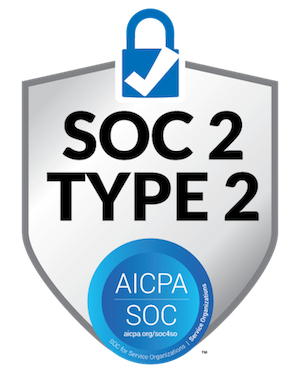
How to Address Letters, Mails, and Envelopes in Canada With Mailing Address Format?
A Canadian mailing address must have a house number, street name, province, municipality, and postal code. Start writing the address by mentioning the recipient’s full name in the first line. The second line should have the main body of the address. Write the civic address details, including the apartment number and street name. Use the third and last line to include the municipality name, provide code, and the 6-character postal code.
You can use the second line to include any additional details for the address. For example, mention the department or business name on this line to ensure the mailer goes to the right recipient.

For rural addresses, you must use a rural route identifier and the station details in the second line. It is necessary to keep your Canadian mailing addresses short and precise to avoid guesswork and incorrect interpretations. Use the correct abbreviations for street types and directions.
For Military addresses, you must include the correct Army Post Office (APO) number instead of using a postal code. PO addresses will use a PO Box number instead of the street name.
Still, if you are wondering how to address an envelope to be sent to Canada, this blog is the right place for you. While sending out letters, envelopes, and other documents or even parcels, it is important to know the mailing address format of the destination country.
Key Takeaways
- A right Canadian mailing address format helps you avoid unnecessary delays and lost mailpieces.
- We classify all residential, commercial, and industrial addresses as civic addresses in Canada.
- A standard Canadian mailing address has a recipient name, street type, secondary unit designator, province, territory, and postal code.
- It is necessary to write all your address components in uppercase or block letters.
- You can also include a return address in the same format as the delivery address for efficient mailing.
- Rural addresses use specific route route identifiers.
Mailing Format for Canadian Addresses
There is a specific format for all types of Canadian addresses that needs to be followed while addressing an envelope.
Civic addresses:
A civic address will have the following address and mailing format.
| First line | The recipient’s name |
| Second line | Civic address |
| Third line | Municipality name, province or territory, and postal code |
Example
| JOHN JACOBS |
| 10-234 ½ MAIN ST. SE |
| MONTREAL QC H4Z 3Y8 |
Civic Address With Additional Delivery Information
If you want to add additional delivery information when you send mail to Canada, place it between the first and the third line. In this case, the addressing and mailing format will look like this.
| First line | The recipient’s name |
| Second line | Additional delivery information |
| Third line | Civic address |
| Fourth line | Municipality name, province or territory, and postal code |
Example
| JOHN JACOBS |
| MARKETING DEPARTMENT |
| 10-234 ½ MAIN ST. SE |
| MONTREAL QC H4Z 3Y8 |
Rural route addresses:
A postletter format for rural route addresses will look like this.
| First line | The recipient’s name |
| Second line | Rural route identifier and station information |
| Third line | Municipality name, province or territory, and postal code |
Example
| JOHN JACOBS |
| RR 10 LCD MAIN |
| LLOYDMINSTER A8 T7V 2R9 |
Rural route addresses that contain civic addresses:
A rural route address with a civic address will contain the following addressing and mailing elements.
| First line | The recipient’s name |
| Second line | Civic address |
| Third line | Rural route identifier and station information |
| Fourth line | Municipality name, province or territory, and postal code |
Example
| JOHN JACOB |
| 435 CEDAR STREET |
| RR 3 LCD MAIN |
| LLOYDMINSTER AB T9C 2Z7 |
Rural Route Address With Additional Information
Rural addresses that do not contain a civic address, must include additional address information. This additional information will appear over the rural route identifier and station information. The additional information is written as SITE and COMP in the second line. The post letter format for a rural route address with additional information will look like this.
| First line | The recipient’s name |
| Second line | Additional address information |
| Third line | Rural route identifier and station information |
| Fourth line | Municipality name, province or territory, and postal code |
Example
| JOHN JACOB |
| SITE 22 COMP 5 |
| RR 5 LCD MAIN |
| LLOYDMINSTER AC T8C 3Z8 |
Elements of the Correct Address Format in Canada
Abbreviations
Keep your mailing addresses short and precise so there is less scope for guesswork and interpretations. The Canada Post has approved a lot of short forms that you can include in your mailing addresses. Individuals and companies both should know how to address an envelope using abbreviations.
Street types: Many street types in Canada must be clearly mentioned while writing a Canadian mailing address. Following are some examples of street-type abbreviations.
- Extension – EXTN
- Expressway – EXPY
- Grounds – GRNDS
- Freeway – FWY
- Avenue – AVE
- Boulevard – BLVD
- Point – PT
Street directions: North, South, East, West, Northeast, Northwest, Southeast, and Southwest can be written as N, S, E, W, NE, NW, SE, and SW.
Secondary Unit Designators
Apartment, suite, and unit numbers are referred to as secondary unit designators. Although Canada Post allows the mention of other designators, you can mention these unit identifiers by using the abbreviations APT, SUITE, and UNIT. The unit number should be mentioned after any of these abbreviations—for example, APT 201 or SUITE 5.
Provinces and Territories
The Canada address format requires you to mention a province code. The province names are not written as complete words – for quick processing by the mail service. You can search for your province code on Canada Post’s website easily.
Postal Code
Postal codes are an essential requirement for addressing an envelope in Canada. It can help customers in presorting their mails, letters, and envelopes to reduce delivery times. The mail service is also able to sort your mails mechanically and manually using postal codes. They aid in distribution and delivery. Postal codes consist of both numbers and alphabets. The format used for a postal code is “ANA NAN,” wherein A stands for an alphabet and N represents a number.
All Canadian postal codes are divided into two parts:
- The forward sortation area (FSA)
- The local delivery unit (LDU)
The starting three characters constitute the FSA part, and the remaining three characters form the LDU part. For example, V8K (FSA) 2L6 (LDU).
The forward sortation area represents a major geographical region within a location, whereas the local delivery unit states the smallest delivery unit within that geographical location.
 Also Read: Best Address Verification Software
Also Read: Best Address Verification SoftwareGuidelines to Address Letters, Mails, and Envelopes in Canada
- When writing a civic address, write the unit number before the civic number and add a hyphen between them. The civic number should come before the street name.
- If there is an alpha suffix after the civic number, add the suffix after the civic number without any space. However, if the suffix is a fraction, add a space between the civic number and the civic number suffix.
- Separate the first three characters of the postal code from the remaining characters with one space. Do not add any hyphens as it might confuse the postal service workers and delay the delivery.
- If there is additional information like the title, unit, or floor number, add it before the street address.
- Leave at least half an inch of space (10mm) from all sides of the envelope. The postal service workers use it to print barcodes.
- Try to avoid using the # symbol in the post letter format. You can use hyphens to separate the unit/apartment number from the street and civic number.
- Always use abbreviated versions of the street type, street direction, province’s name, and territories for addressing and mailing.
- If you are sending mail from outside Canada, write Canada in capital letters.
- Post the stamp or postage on the upper right-hand corner of the envelope.
- To qualify for a standard machinable postage rate, the rectangular envelope should have a minimum length of 9cm and a width of 14 cm. The maximum length and width can be 15.6 cm and 24.5 cm.
- If you are sending the mail in a square envelope, the minimum length and width should be 14 cm, and the maximum length and width should be 15.6cm.
- Leave at least 5 mm of additional space from the bottom of the envelope. This is called a quiet zone. Do not print anything or add any dark colors in this area.
- If you are adding a municipality, add it in the same line as the province and state code. Separate province from the municipality with one space, and province from postal codes with two spaces.
- All the address lines should be aligned to the left side and should be less than or equal to 40 characters, excluding the space.
Other Things to Know While Addressing Mails According to the Canada Post Format
Military Address
While they follow the same post letter format as the regular address, the military address does not use a state or city name. The city name will either be APO (Air/Army Post Office), FPO (Fleet Post Office), or DPO (Diplomatic Post Office). In place of the state name, you can write AE (Armed Forces Europe) and AP( Armed Forces Pacific).
Bilingual Address
While addressing an envelope according to the Canada address format, you need to take care of a couple of things relating to bilingual addresses. These addresses are used to send mails in two languages for various reasons. There has to be a black vertical line of at least 0.7 mm between both addresses. You should leave a space of about 10 mm on both sides of the black line. The addresses can be written beyond this space.
Return Address
It is not mandatory to add a return address to the mail. However, it can be useful in situations where the mail gets undelivered. The mail delivery service provider will return the undelivered mail to the sender. Maintain a minimum of 15mm space between the bottom of the return address and the top of the destination address. The maximum space it should take is 35mm from the top left corner of the envelope.
Indicia
In case you are sending the mail as a direct mail piece, you should add indicia on the top right corner of the envelope in the postage zone. It is used to identify the direct mail service type and the customer number. If you are sending mail from a commercial Canada Post account, adding the indicia is mandatory. The minimum acceptable length and width is 19 mm and 36 mm respectively while the maximum acceptable length and width is 35mm and 73mm.
PO Address With Civic Address and Additional Information
If you want to add additional information in an address with a PO box number, the details will appear in the first line. Similarly, if you want to add a civic address, it will appear over the PO box number and the station information.
The format for a PO address with civic address and additional information will be as follows.
| First line | The recipient’s name |
| Second line | Additional delivery information |
| Third line | Civic address |
| Fourth line | Postal Box number and station information |
| Fifth line | Municipality name, province or territory, and postal code |
Example
| JOHN JACOBS |
| MARKETING DEPARTMENT |
| 1324 JAMES ST. |
| PO BOX 4005 STN B |
| VICTORIA DC V7X 3Y4 |
How to Address a Letter to a Family?
When you are sending a letter, or postcard to a family, writing the address can get tricky since you want to address the whole family. In this case, keep the following things in mind.
- If the family’s last name ends in a consonant that is not an “s”, “ss,”x” or “z”, add s in the end. For example, The Smiths.
- If the family name ends in “s”, “ss”, “x”, “z”, add es at the end of the name. For example, The Felixes.
- If you want to skip the pluralization, you can always add “Family” at the end of the name. For example, The Childress Family.
- In case the family uses two names, that are not legally combined, you can add “and” between them. For example, The Lyman and Smith Family.
How Many Stamps Should You Use and What is the Mailing Cost in Canada?
The number of stamps and the mailing cost in Canada depend on the weight of the mail. According to Canada Post, the charges for standard-size mail are as follows.
| Weight | Price |
| Up to 30 g | Single stamp- $1.15 Per stamp in a booklet- $0.99 |
| 30 g to 50 g | $1.40 |
Source: Canada Post
If you have to send non-standard and oversized mail, the cost would be as follows.
| Weight | Price |
| Up to 100 g | $2.09 |
| 100 g – 200 g | $3.43 |
| 200 g – 300 g | $4.78 |
| 300 g – 400g | $5.48 |
| 400 g – 500 g | $5.89 |
Source: Canada Post
If you are sending mail from the US to Canada, we recommend using forever stamps. These stamps remain usable regardless of how much the new stamp costs. You can use it to send letters and postcards weighing up to 30g. For larger packages, the price will vary according to the weight, size, and destination.
USA Address
The mailing address format to send USA mails from Canada is:
- First line: Addressee name (individual, institution, or company name).
- Second-last line: City, state, and ZIP code. (Two spaces to be left between the state and zip code. Note that there should be a hyphen between the fifth and sixth digits of a ZIP+4 code. Moreover, remember to mention the two-letter abbreviations for state names).
- Third-last line: The apartment or suite number, and street address.
- Last line: Country (the country name should be mentioned alone on the last line. There should be nothing else written after this line). If you need to mention anything else, you can print it on the second line and below the addressee’s name.
- International Address:
- International addresses should be written in a format similar to USA addresses. However, city names can be replaced by municipality names, and provinces or territories can replace states, ZIP codes can be replaced as postal codes.
- Country names should not be written using any abbreviations. They should always be written in full and spelled correctly. For example, IN for India, UK for the United Kingdom, or UAE for the United Arab Emirates is not acceptable.
PO Address
PO addresses also use the same format as civic addresses. Only replace the street name with a PO box number.
 Also Read: Bulk Batch Address Verification Services
Also Read: Bulk Batch Address Verification ServicesConclusion
By now you must have an in-depth knowledge of the various formats used to write letters, mail, and envelopes. Knowing the correct format prevents the possibility of non-delivery, and avoids delays. While knowing the format is important, it is equally important to ensure that the address exists, is right, and is deliverable. Use PostGrid’s address verification solution to cross-check the accuracy of the address. We are SERP certified which means we use the official address database of Canada to check its validity and deliverability. Additionally, with us, you can verify over 200k addresses in one go. We also offer real-time address autocomplete suggestions you are curious to know how we work, request a demo with us now.
 Also Read: Routing Numbers In Canada
Also Read: Routing Numbers In Canada








